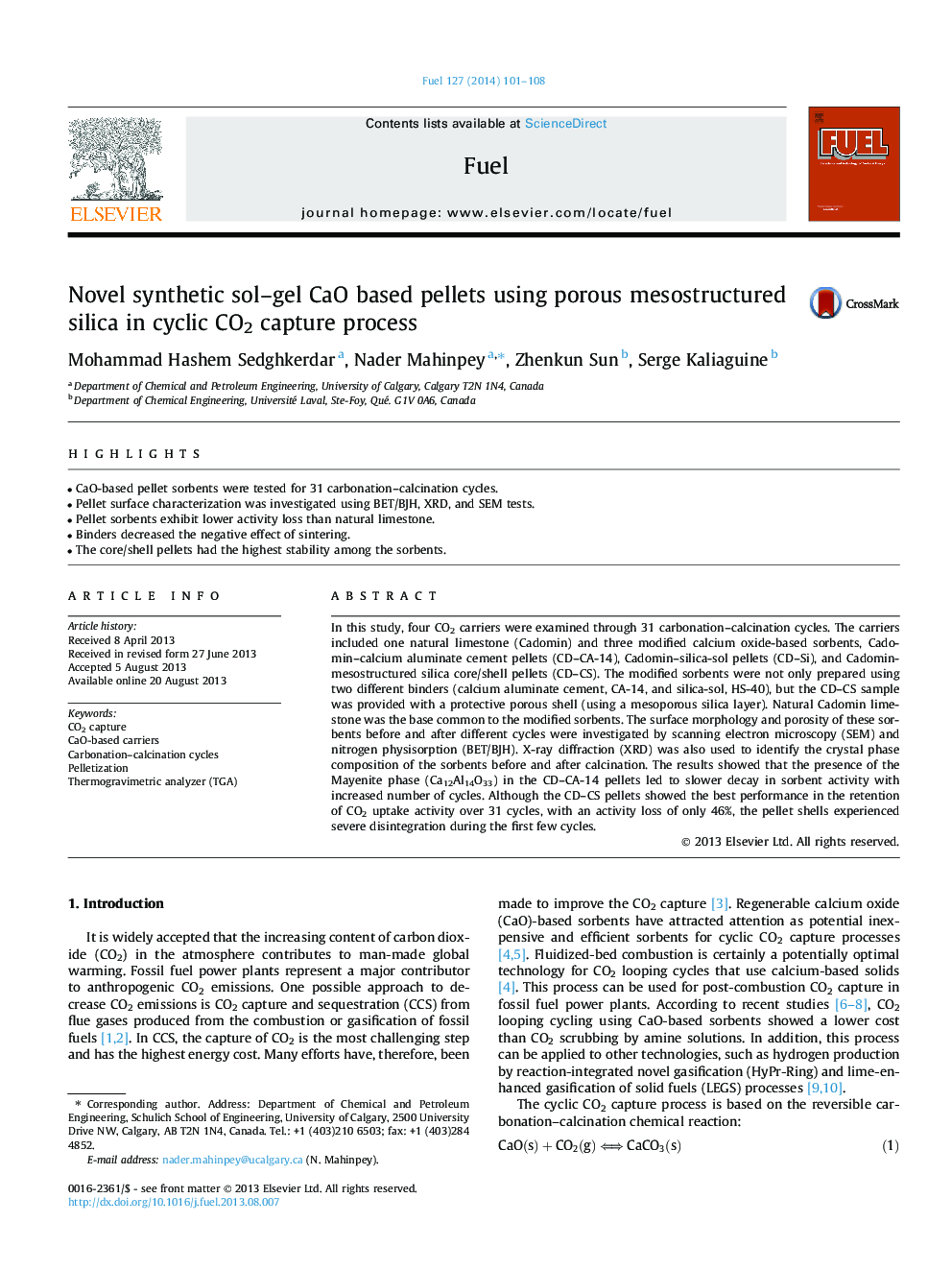| Article ID | Journal | Published Year | Pages | File Type |
|---|---|---|---|---|
| 6637716 | Fuel | 2014 | 8 Pages |
Abstract
In this study, four CO2 carriers were examined through 31 carbonation-calcination cycles. The carriers included one natural limestone (Cadomin) and three modified calcium oxide-based sorbents, Cadomin-calcium aluminate cement pellets (CD-CA-14), Cadomin-silica-sol pellets (CD-Si), and Cadomin-mesostructured silica core/shell pellets (CD-CS). The modified sorbents were not only prepared using two different binders (calcium aluminate cement, CA-14, and silica-sol, HS-40), but the CD-CS sample was provided with a protective porous shell (using a mesoporous silica layer). Natural Cadomin limestone was the base common to the modified sorbents. The surface morphology and porosity of these sorbents before and after different cycles were investigated by scanning electron microscopy (SEM) and nitrogen physisorption (BET/BJH). X-ray diffraction (XRD) was also used to identify the crystal phase composition of the sorbents before and after calcination. The results showed that the presence of the Mayenite phase (Ca12Al14O33) in the CD-CA-14 pellets led to slower decay in sorbent activity with increased number of cycles. Although the CD-CS pellets showed the best performance in the retention of CO2 uptake activity over 31 cycles, with an activity loss of only 46%, the pellet shells experienced severe disintegration during the first few cycles.
Keywords
Related Topics
Physical Sciences and Engineering
Chemical Engineering
Chemical Engineering (General)
Authors
Mohammad Hashem Sedghkerdar, Nader Mahinpey, Zhenkun Sun, Serge Kaliaguine,
